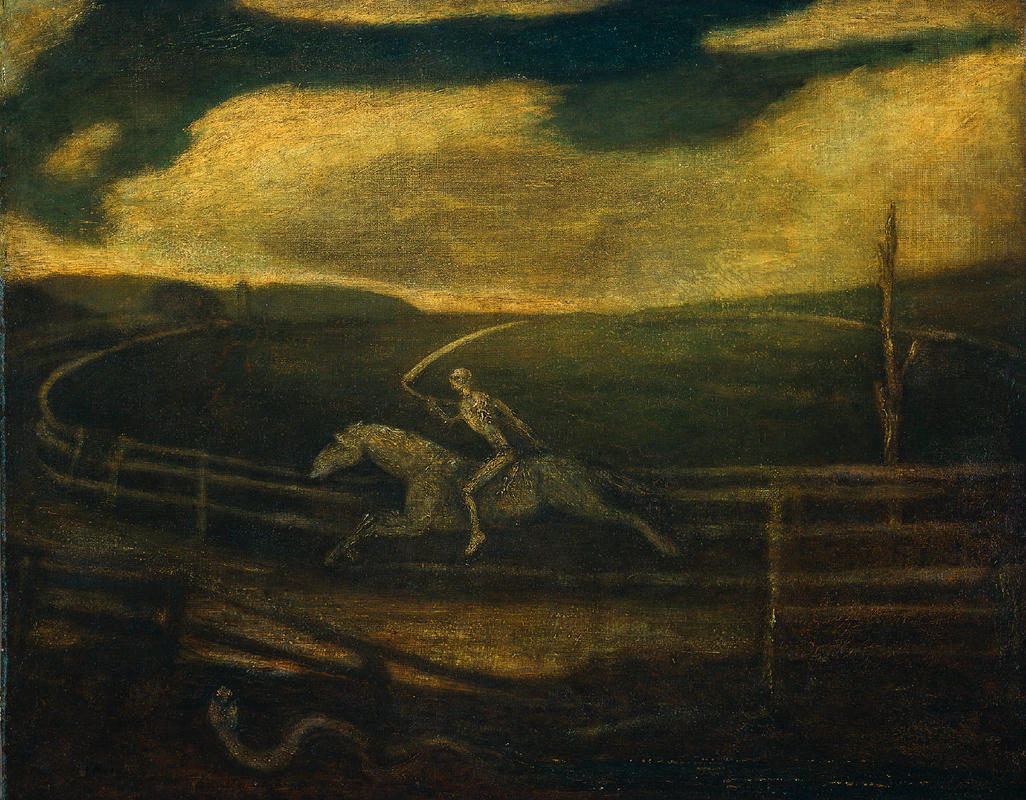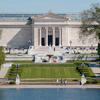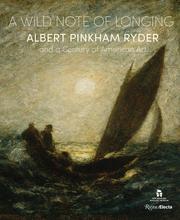More about The Race Track (Death on a Pale Horse)
- All
- Info
- Shop

Contributor
Albert Pinkham Ryder’s The Race Track (Death on a Pale Horse) alludes to the unsuspecting but sometimes deadly pitfalls that come from a day at the races.
In typical Ryder fashion, The Race Track contains dark, grim colors, sweeping brush strokes, and terrifying medieval religious imagery. Death appears to be taking a crack at horse racing, with nobody willing to compete against him nor root him on save for a slithery snake hanging out behind a dilapidated fence, staring ominously at Death…or is it at us? Like most of his art, Ryder worked on this painting for several years and was reluctant to part with it, though he may have had personal reasons for becoming so attached to The Race Track. It was, after all, based on a true story.
The origins of this creepy painting are well documented. While staying at the Hotel Albert, an establishment built by Albert S. Rosenbaum and managed by Ryder’s brother, he found himself in conversation with a waiter who was betting on an upcoming horse race. In Ryder’s own words:
“…[the waiter] told me that he had saved up $500 and that he had placed every penny of it on Hanover winning this race. The next day the race was run, and, as racegoers will probably remember, Hanover came in third. I was immediately reminded that my friend the waiter had lost all his money. That dwelt in my mind, as for some reason it impressed me very much, so much so that I went around to my brother’s hotel for breakfast the next morning and was shocked to find my waiter friend had shot himself the evening before. This fact formed a cloud over my mind that I could not throw off, and 'The Race Track' is the result.”
In many ways The Race Track is an elaboration of that experience, of Ryder grappling with the tragic death of some kid who never read up on financing. It is also an allegorical take, with Death sitting atop a phantom horse, running the wrong way along the track, the track stretching out beyond the horizon into infinity. A muted landscape with a ruined fence and single dead tree represent Ryder’s grim contemplation over a brief existence, over the motivations of greed that drive us to do perilous things, all of this punctuated by that slithery symbol of temptation, the snake, rooting Death on.
Many thought of Ryder as a kind of mystic due to his reclusive nature (aren’t we all mystics, though?), content to live apart from the world in his tiny and messy studio and labor over his paintings obsessively. He is known for taking simple ideas and transforming them into powerfully haunting expressions with stark, emotional depth. He is one of America’s greatest Romanticist painters and The Race Track may be his most famous work.
Sources
- The Art Story Editors. “Albert Pinkham Ryder.” www.theartstory.org. Accessed June 18, 2018. http://www.theartstory.org/artist-ryder-albert-pinkham.htm
- Bertman, Sandra. “The Race Track or Death on a Pale Horse.” www.medhum.med.nyu.edu. Accessed June 18, 2018. http://medhum.med.nyu.edu/view/12603
- Cleveland Art Editors. “The Race Track (Death on a Pale Horse).” www.clevelandart.org. Accessed June 18, 2018. http://www.clevelandart.org/art/1928.8
- Encyclopaedia Britannica Editors. “Albert Pinkham Ryder.” www.britannica.com. Accessed June 18, 2018. https://www.britannica.com/biography/Albert-Pinkham-Ryder
- The Hotel Albert Editors. “Albert Pinkham Ryder.” www.thehotelalbert.com. Accessed June 8, 2018. http://thehotelalbert.com/history/albert_pinkham_ryder.html












